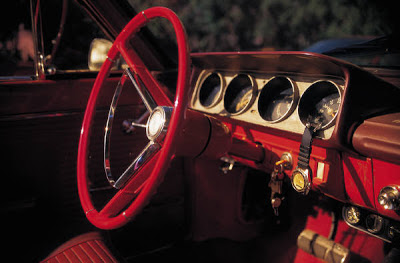Wireless Car Chargers: Market Shares, Strategy, and Forecasts, Worldwide, 2013 to 2019 report has 260 pages, 72 tables and figures. Worldwide markets are poised to achieve significant growth as wireless car charging pads permit users to charge the electric auto without disconnecting/reconnecting cables. Electrical vehicle charging can be done anywhere just by driving the car over the charger and positioning it correctly to pick up the current
Wireless charging in the automotive industry brings inductive power for EV cars. Short distance power transmission is based on magnetic induction. With this technology, power is transferred when the receiver is close to the transmitter. Magnetic induction has been used for decades in electronic equipment. It is good because it is simple, efficient, and safe. It is now being applied to charging for electric vehicles.
As power is induced through the primary charging coil, a magnetic field is produced. The magnetic field is received by the secondary coil. It is converted back into a voltage. Shielding can be added to either coil of the transformer system. The aim is to direct the field effects. This can be useful in multiple pad charging applications. The aim is to eliminate power cross-talk. Wireless inductive charging is gaining popularity for use in consumer rechargeable applications such as cordless power tools, net books, note books and other power-hungry rechargeable devices.
Market driving forces relate primarily to the need for efficient power generation for autos. Wireless car charger manufacturers are positioning car models with wireless charging to drive demand at the high end. Many electric vehicle car vendors are making wireless power a reality. Only two vehicles are supported now, the Chevy Volt and the Nissan Leaf.
Wireless power is an emerging technology that creates a better charging experience for consumers. Just as Wi-Fi replaced the need to use an Ethernet cable for Internet connectivity, so also wireless power is making recharging wirelessly a feature that is demanded by consumers with an electric vehicle. .
Wireless car charging represents the major force impacting electrical charging. Car vendors are coming together to create standards and to leverage standards to gain competitive advantage with highly differentiated product sets.
Inductive wireless charging does not use as much grid electricity to achieve device charging. Electricity is generated in a coil. Inductive charging means the primary coil in the charger induces a current in the secondary coil in the device being charged.
Wireless charging is already available for-low power applications. The charging systems are suitable for electronic devices. Wireless chargers use magnetic induction. They offer the promise of being able to place a car over the charging device and have the electrical vehicle EV charge automatically - no fiddling with cables required. Remote power transfer is a complex business with some very fine tuning required to make it work well. Wireless charging is more accurately described as "inductive charging" because it uses magnetic induction.
Inductive charging uses magnetism to transmit energy. The current coming from the wall power outlet moves through the wire in the wireless charger, creating a magnetic field. The magnetic field creates a current in the coil inside the device. This coil is connected to the battery and the current charges the battery. Cars must have the appropriate hardware in them to support wireless charging - a device without the appropriate coil cannot charge wirelessly.
Consideration of wireless car charging market forecasts indicates that markets at $1.7 million will reach $4.6 billion by 2019. Growth comes as a result of the rapid adoption of electric vehicles that pushes the user base up by 2019. While wireless car charging is considered a perquisite for an EV, it is soon expected to become a necessary feature.
Publisher supports various market segment programs; provides trusted technical services to the marketing departments. It carries out accurate market share and forecast analysis services for a range of commercial and government customers globally. These are all vital market research support solutions requiring trust and integrity.
This wireless car charger shipment analysis is based on consideration of the metrics for the number of electric cars shipped. Distributor and customer experience using the wireless car chargers is another factor that contributes to development of triangulation regarding market forecasts for the sector.
In addition to covering the Wireless Car Chargers Market Definition and Market Dynamics, Wireless Car Chargers Market Shares and Market Forecasts, Wireless Electric Car Chargers Product Description, Wireless Car Chargers Technology, Wireless Chargers Company Description. The report covers 34 companies - Bosch, Alliance for Wireless Power, Apple, AudioDev, Consumer Electronics Association, Convenient Power, Energizer, Good & Easy Technology, Google, Google / Motorola, HLC Electronics, HLC Electronics, Integrated Device Technology Business, Intel, iPDA - Newlift Technologies, LG, MAPTech Co, MC Power Technology, Microsoft / Nokia, Nokia, Procter & Gamble, Procter & Gamble / Duracell, PowerbyProxi, Power Matters Alliance, Qualcomm, Qualcomm / WiPower, Rexpower Industrial Development, Samsung, Shenzhen Koeok Electronic Technology, Shineworld Innovations, Texas Instruments, Toyota, Visteon, Wireless Power Consortium.
For more information visit: http://www.marketresearchreports.com/wintergreen-research/wireless-car-charging-market-shares-strategies-and-forecasts-worldwide-2013
Find all Automotive reports under a single page.
Find all Hybrid Electric Vehicle Reports under a single page at: http://www.marketresearchreports.com/hybrid-electric-vehicles

No comments:
Post a Comment